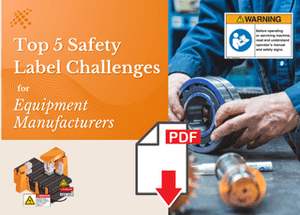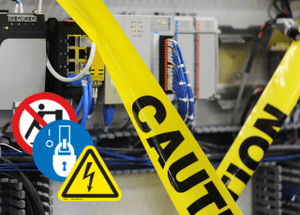NFPA 70E 2021 Safety Updates

It’s not always easy to keep up with new safety standards and the ongoing revision cycles of existing ones. On that note, the National Fire Protection Agency (NFPA) has released a 2021 update of NFPA 70E, the internationally accepted American National Standard that defines electrical safety-related work practices. According to OSHA, companies should use NFPA 70E as their primary guide to detecting and removing electrical dangers that put employees at risk; OSHA looks to the prescriptive-based requirements of NFPA 70E to fulfill the performance-based requirements included in its standards. The 2021 NFPA 70E updates are the first change to this safety standard since 2018. Understanding and maintaining compliance with the most recent changes – both for equipment manufacturers and site supervisors – can raise safety standards and help to prevent electrical fires and accidents.
Key Changes in the 2021
Updates to NFPA 70E
What are some of the key changes in the 2021 edition of NFPA 70E? Take a look,
below, as we breakdown the highlights.
- Updated
Arc Flash Table
The new version of NFPA 70E includes revisions to Table 130.5(C), which helps workers estimate the risk of a dangerous arc flash incident. The new table is designed to prevent misuse of the information and make sure readers understand the limitations of the table. For example, the authors of the standard can’t predict the likelihood of arc flash for damaged or poorly maintained equipment.
With the updated table, users can review more than 30 checkpoints to evaluate arc flash risk. New entries include information about checking switches and circuit breakers after operating them for the first time or after maintaining the equipment.
- Revised
Energy Thresholds
Lab settings are subject to maximum energy settings for electrical systems and equipment. The new thresholds are:
o
Direct
current:
100 volts and 40 milliamperes
o
Alternating
current:
50 volts and 5 milliamperes
These updates appear in Section 350.9.
- Expanded
Capacitator Requirements
Capacitors store energy used in heating and air conditioning systems, fans, conveyors and other types of machinery. While previous versions of NFPA 70E addressed capacitors, the new guidelines expand safety information about these components.
The new information includes:
o Safe work conditions for electric capacitors
o Risk assessment for capacitor use
o Measures to keep workers safe during capacitor
use
These details now appear in Article 360, Safety-Related Requirements for Capacitors.
- Updated
Safety Training Options
As in the 2018 edition, employees who need electrical safety training can undergo hands-on job training, classroom training or a combination of these options. In a new 2021 provision, employers can provide interactive online or electronic safety training in the classroom setting.
- Improved Organization
Several changes to the new edition of NFPA 70E strive to make the guide more comprehensive and user-friendly. In Article 110, General Requirements for Electrical Safety-Related Work Practices, editors have consolidated a list of general requirements from other sections as the guide to create a reference manual for electrical hazard elimination on equipment and in the workplace.
Organizational updates to NFPA 70E also expand and revise Article 130, titled Work Involving Electrical Hazards. Specifically, editors have added information about safe procedures, precautions, assessments and work practices in the presence of electrical hazards. These new details appear in Section 130.1, General, and Section 130.2, Energized Electrical Work Permit.
- Emphasized Documentation Instructions
Editors of NFPA 70E have added details about the importance of documenting, filing and following manufacturer instructions and recommendations for personal protective equipment and electrical equipment. New standards for manufacturers of these products require companies to increase accessibility and readability of maintenance and safety instructions that are in line with best practice safety standards.
- New PPE
Requirements
NFPA updates recommendations for personal protective equipment, including non-melting shoes, insulating blankets, arc-rated clothing, hearing protection, eye shields and nonconductive head protection. Previous editions instructed workers to remove high-visibility vests worn over arc-rated clothing. The 2021 edition now indicates that qualified workers may wear a high-visibility category 1 arc-rated vest during the workday and do not need to remove it when measuring voltage or troubleshooting equipment.
Also in the PPE category, the editors have redefined balaclava to describe head-protective arc-rated fabric that covers most of the head and neck. They have removed the words sock and hood from the definition.
While earlier editions indicated that leather is the only electrically safe footwear material, the 2021 version of NFPA 70E also includes other types of footwear. They note that materials must demonstrate resistance from dripping, melting or ignition at the required arc flash rating.
- Battery
and Circuit Breaker Safety
This updated section requires testing and inspection of circuit breakers that are nearing their ratings for fault interruption. It also limits the power of energy exposure for batteries to 100 volts DC or 50 volts AC and 5 milliamperes to reduce the risk for thermal, chemical, arc flash and shock hazards. The revised guide emphasizes the danger associated with 1,000-volt lithium batteries, which can result in severe shock injury or death.
What’s Next for NFPA
70E
NFPA 70E is revised every three years. The requirements in NFPA 70E will
remain the industry standard until the next edition of the standard comes out,
which is expected in 2024. The next edition is open for public input which can
be made online. You can learn more about NFPA 70E – including the standard
itself and the revision cycle – on the
NFPA.org
website.
Supporting Electrical
Safety Measures
The vast majority of machinery manufactured today has potential electrical
hazards – and electrical hazards exist across every facility. The consequences
of interaction with these hazards can be severe: electrocution, electric shock,
burns, fire, arc flash explosion and equipment damage related to improper
grounding or electrostatic discharge. Clarion Safety’s labels and signs address
electrical hazards and are essential to the safe use and maintenance of equipment
and to workplace safety.
Reach
out to our team to learn more about how our products and services – including machine
risk assessment – and how we can help support your electrical safety needs.



